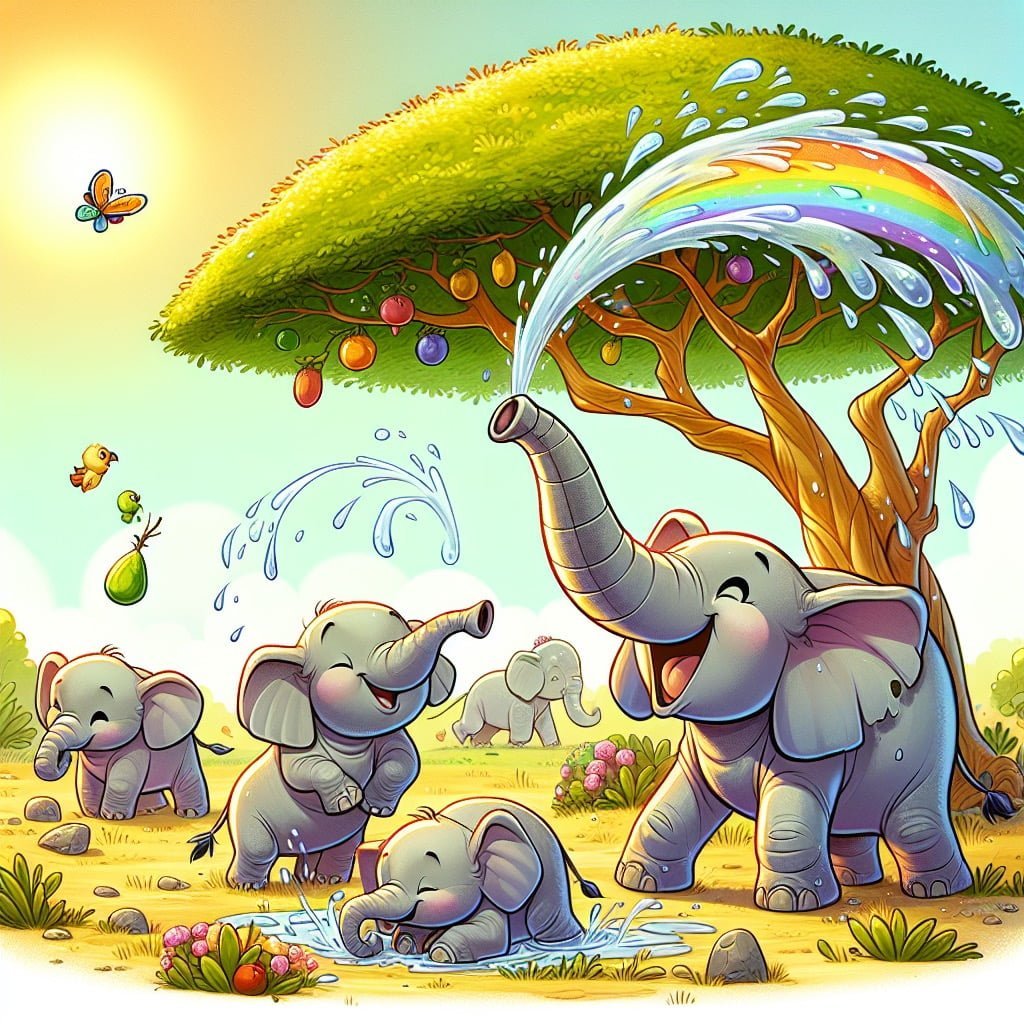Welcome to our blog post on “Jellyfish Facts For Kids,” where we dive into the fascinating world of these unique ocean creatures. From the surprising fact that jellyfish have no brains to their ability to clone themselves, there is so much to learn and discover about these mesmerizing organisms. Whether you’re a younger kid looking for fun and engaging jellyfish trivia or an older kid wanting to delve deeper into the science behind these mysterious creatures, this post has something for everyone. Join us as we explore the wonders of jellyfish, from their ancient origins to their glowing bioluminescence, and everything in between. Get ready to be amazed by the incredible resilience, diversity, and beauty of jellyfish as we unravel the secrets of these captivating sea creatures. Let’s embark on this educational journey together and unravel the mysteries of jellyfish!
Jellyfish Facts For Kids
1. Jellyfish Have No Brain
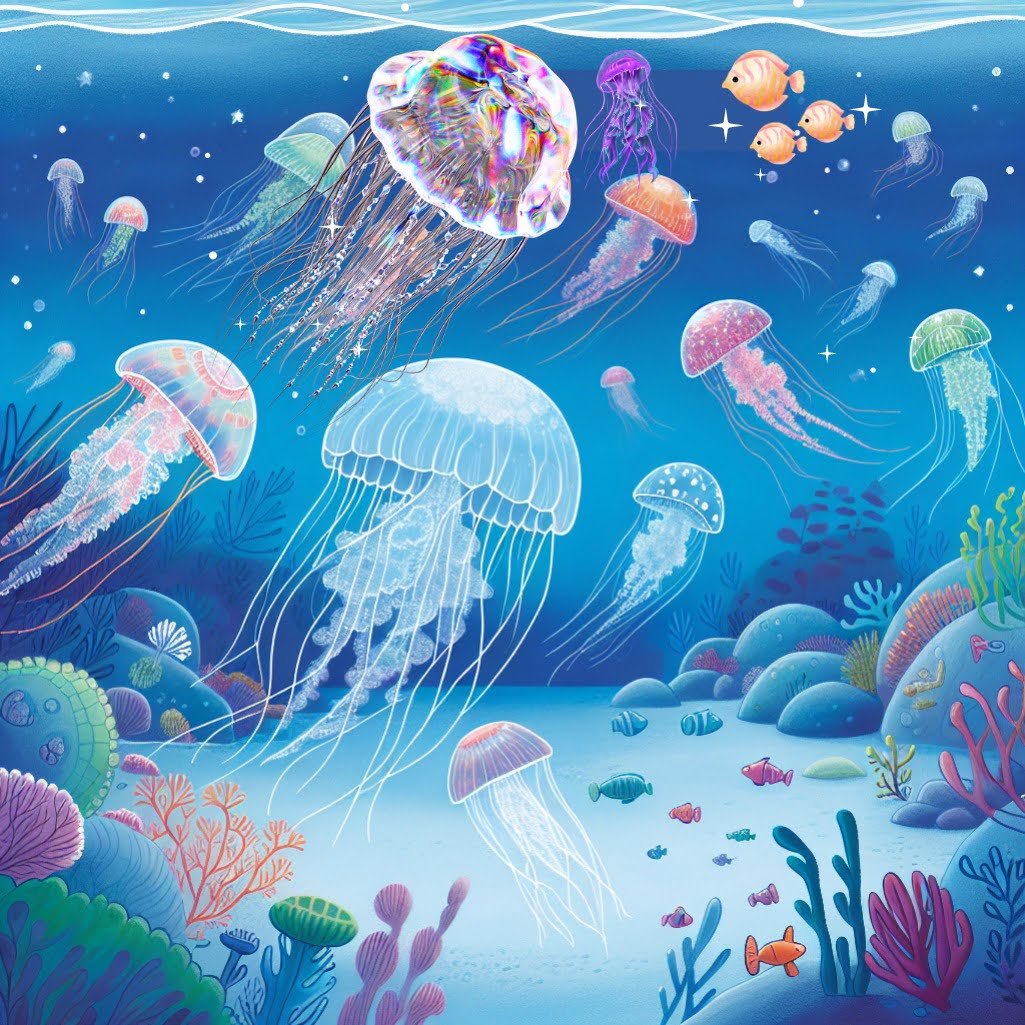
For younger kids: Jellyfish don’t have brains, but they still know how to float and sting!
For older kids: Despite their lack of a brain, jellyfish are equipped with a simple nervous system that helps them navigate the ocean and capture prey efficiently.
Detailed explanation:Jellyfish, fascinating creatures of the sea, are known for their unique characteristics. One of the most intriguing facts about jellyfish, especially for kids, is that they have no brain. Unlike humans and many other animals, jellyfish do not have a central nervous system or a brain to control their actions. Instead, they rely on a network of nerves called a nerve net to sense their environment and coordinate their movements.
The absence of a brain in jellyfish does not mean that they are simple organisms. In fact, jellyfish have evolved impressive adaptations to survive and thrive in their aquatic environments. Their nerve net allows them to detect changes in light, temperature, and currents, helping them navigate the ocean and find food. Jellyfish also have specialized structures called rhopalia, which contain clusters of sensory cells that enable them to sense touch, smell, and even orientation in the water.
Despite their lack of a brain, jellyfish are capable of some remarkable behaviors. They can move through the water by contracting and relaxing their bell-shaped bodies, propelling themselves forward in search of food. They can also sting their prey or predators with specialized cells called nematocysts, which inject venom to subdue their target.
In conclusion, the fact that jellyfish have no brain is a key aspect of their biology that sets them apart from other animals. While they may seem simple at first glance, jellyfish are complex creatures with unique adaptations that allow them to thrive in the world’s oceans. Learning about jellyfish facts can inspire curiosity and a sense of wonder about the diversity of life on Earth.
Jellyfish Facts For Kids
2. Jellyfish Are Not Actually Fish

For younger kids: Jellyfish are called fish, but they are really soft, floating creatures!
For older kids: Jellyfish belong to a group of animals called ‘Cnidarians’, which are different from fish; they lack bones, hearts, and gills like true fish.
Detailed explanation:Jellyfish Facts For Kids: Jellyfish Are Not Actually Fish
Despite their name, jellyfish are not actually fish. In fact, they are not even vertebrates like fish are. Instead, jellyfish belong to a group of animals known as cnidarians, which also includes corals and sea anemones. Cnidarians are characterized by their simple body structure, which consists of a sac-like shape with stinging tentacles.
One of the main differences between jellyfish and fish is their lack of a backbone. Fish are vertebrates, meaning they have a spinal column made up of individual bones. Jellyfish, on the other hand, are invertebrates, meaning they do not have a backbone or any internal skeleton at all. Instead, their bodies are made up of a jelly-like substance called mesoglea, which provides structure and support.
Another key difference between jellyfish and fish is their method of movement. Fish have fins that they use to swim through the water, while jellyfish rely on pulsations of their bell-shaped bodies to propel themselves forward. This unique method of movement gives jellyfish their distinctive floating appearance in the water.
Despite these differences, jellyfish are fascinating creatures that play an important role in marine ecosystems. They are important predators of zooplankton and small fish, helping to maintain the balance of marine food webs. Jellyfish also have a unique reproductive strategy, with many species alternating between a polyp stage and a medusa stage in their life cycles.
In conclusion, while jellyfish may be commonly referred to as fish, they are actually invertebrates belonging to the group Cnidaria. Their simple body structure, lack of a backbone, and unique method of movement set them apart from true fish. Understanding these differences can help kids (and adults) appreciate the diversity of life in the ocean.
Jellyfish Facts For Kids
3. Jellyfish Can Clone Themselves
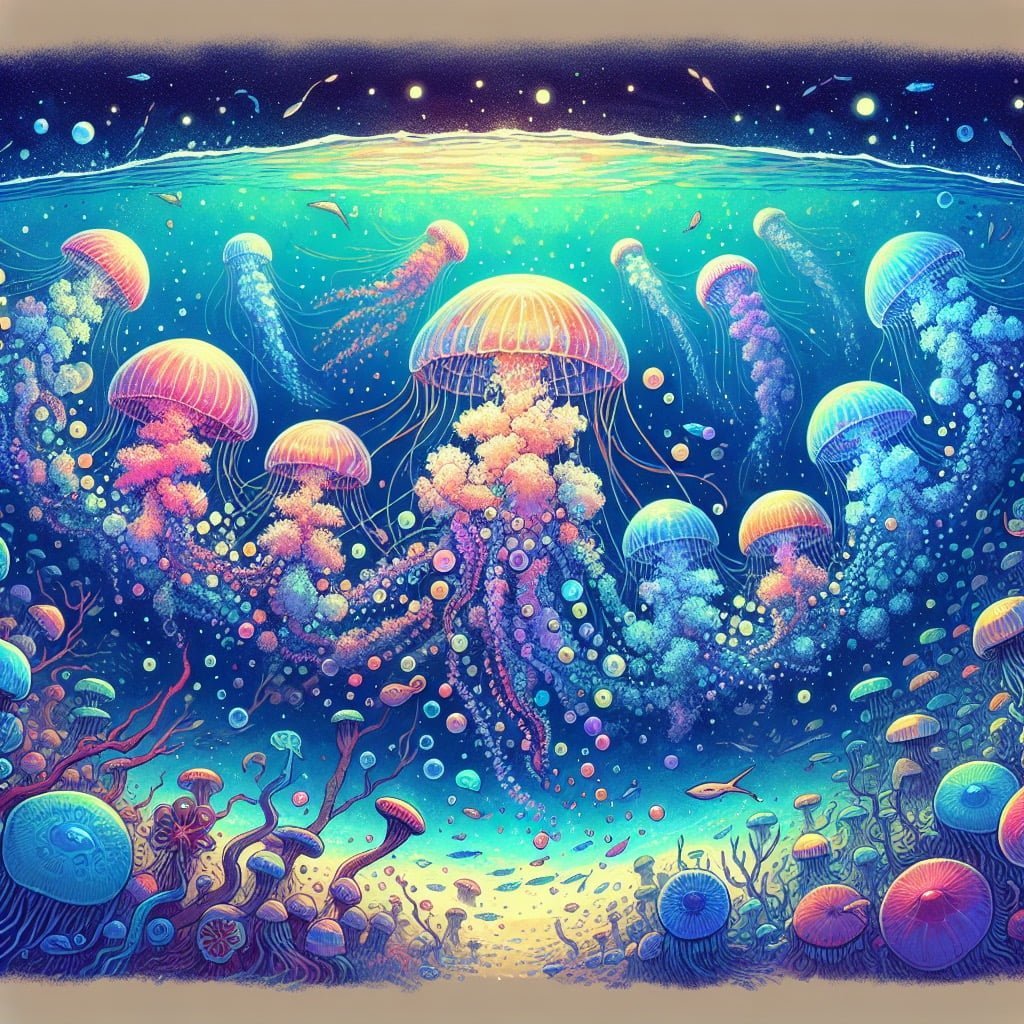
For younger kids: Some jellyfish can make exact copies of themselves all on their own!
For older kids: Certain species of jellyfish have the remarkable ability to reproduce asexually by self-cloning, creating genetically identical offspring in times of stress or favorable conditions.
Detailed explanation:Jellyfish Facts For Kids:
One fascinating fact about jellyfish is that they have the ability to clone themselves. This process, known as asexual reproduction, allows jellyfish to reproduce without the need for a mate. Instead of mating with another jellyfish to produce offspring, a jellyfish can simply clone itself by duplicating its cells and forming a new, genetically identical individual.
The ability to clone themselves gives jellyfish a unique advantage in terms of population growth. In favorable conditions, jellyfish populations can rapidly increase as each individual has the potential to create multiple copies of itself. This can lead to jellyfish blooms, where large numbers of jellyfish congregate in an area, sometimes disrupting the ecosystem by outcompeting other species for food and resources.
One type of jellyfish known for its cloning ability is the Turritopsis dohrnii, also known as the immortal jellyfish. This species has the remarkable ability to revert back to its juvenile polyp stage after reaching maturity, allowing it to essentially cheat death and potentially live forever. This constant cycle of growth and cloning has led scientists to study the immortal jellyfish in hopes of unlocking the secrets of longevity and regeneration.
In conclusion, the fact that jellyfish can clone themselves is just one of the many fascinating aspects of these mysterious creatures. Their unique reproductive abilities highlight the incredible diversity and adaptability of life in the ocean. Studying jellyfish and their cloning capabilities can provide valuable insights into evolution, genetics, and the interconnectedness of marine ecosystems.
Jellyfish Facts For Kids
4. Jellyfish Have Existed for Millions of Years
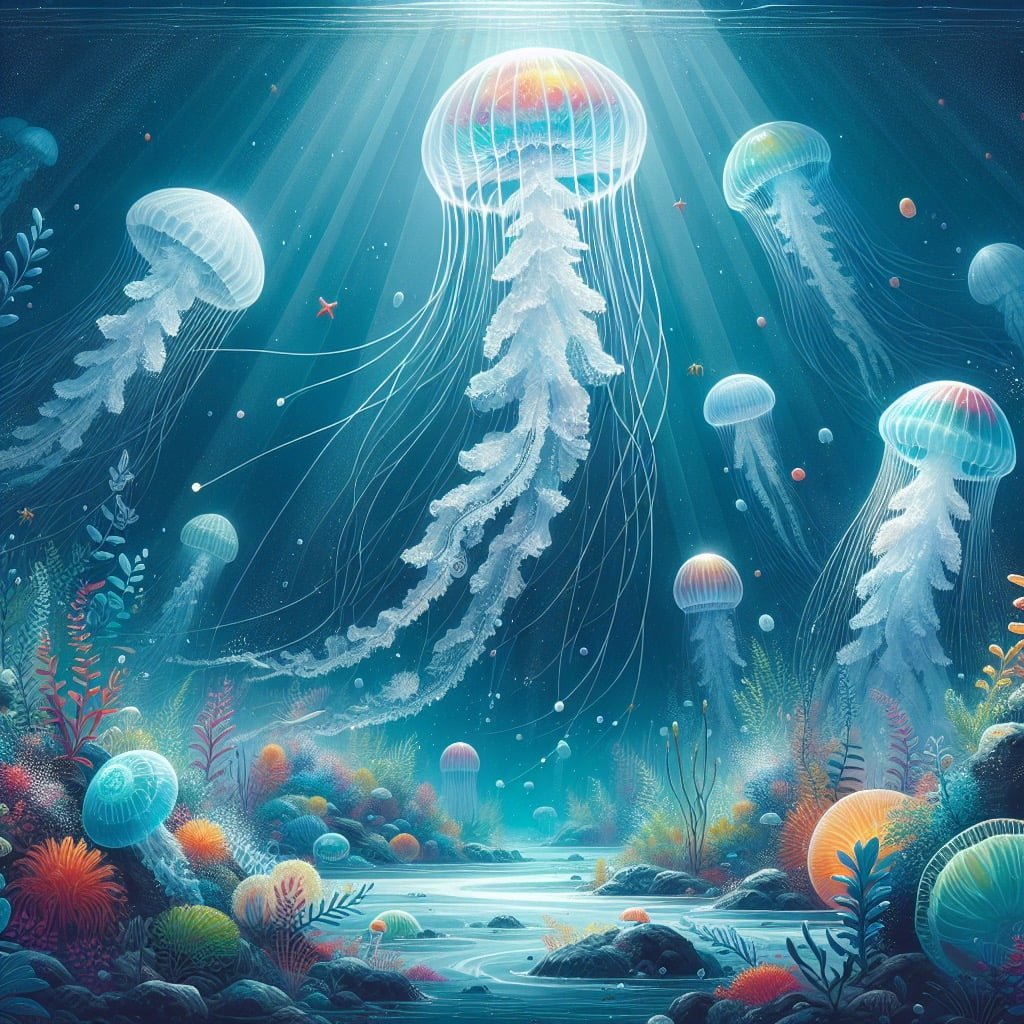
For younger kids: Jellyfish have been around for a really, really, really long time!
For older kids: Fossils of jellyfish date back over 500 million years, making them one of the oldest living creatures on Earth.
Detailed explanation:Jellyfish Facts For Kids – Jellyfish, fascinating creatures that inhabit the world’s oceans, have a long and storied history that stretches back millions of years. They are some of the oldest and most primitive forms of life on Earth, with fossil evidence dating back over 500 million years. These gelatinous organisms have survived and adapted to various environmental conditions throughout history, making them one of the most enduring species on the planet.
Jellyfish belong to the phylum Cnidaria, which includes other related organisms such as corals and sea anemones. They come in a wide variety of shapes, sizes, and colors, with some species capable of delivering a painful sting to humans. Despite their delicate appearance, jellyfish are remarkably resilient and have thrived in different marine ecosystems for millions of years.
One of the key factors that have allowed jellyfish to survive for so long is their unique life cycle. They have both a polyp stage, where they attach themselves to a surface and reproduce asexually, and a medusa stage, where they swim freely in the water and reproduce sexually. This dual life cycle has enabled jellyfish to adapt to changing environmental conditions and ensure the continuation of their species over millions of years.
In conclusion, jellyfish have been a prominent feature of Earth’s oceans for millions of years, showcasing their remarkable resilience and adaptability. By understanding more about these captivating creatures, we can appreciate the complexity and beauty of the natural world around us.
Jellyfish Facts For Kids
5. Some Jellyfish Glow in the Dark
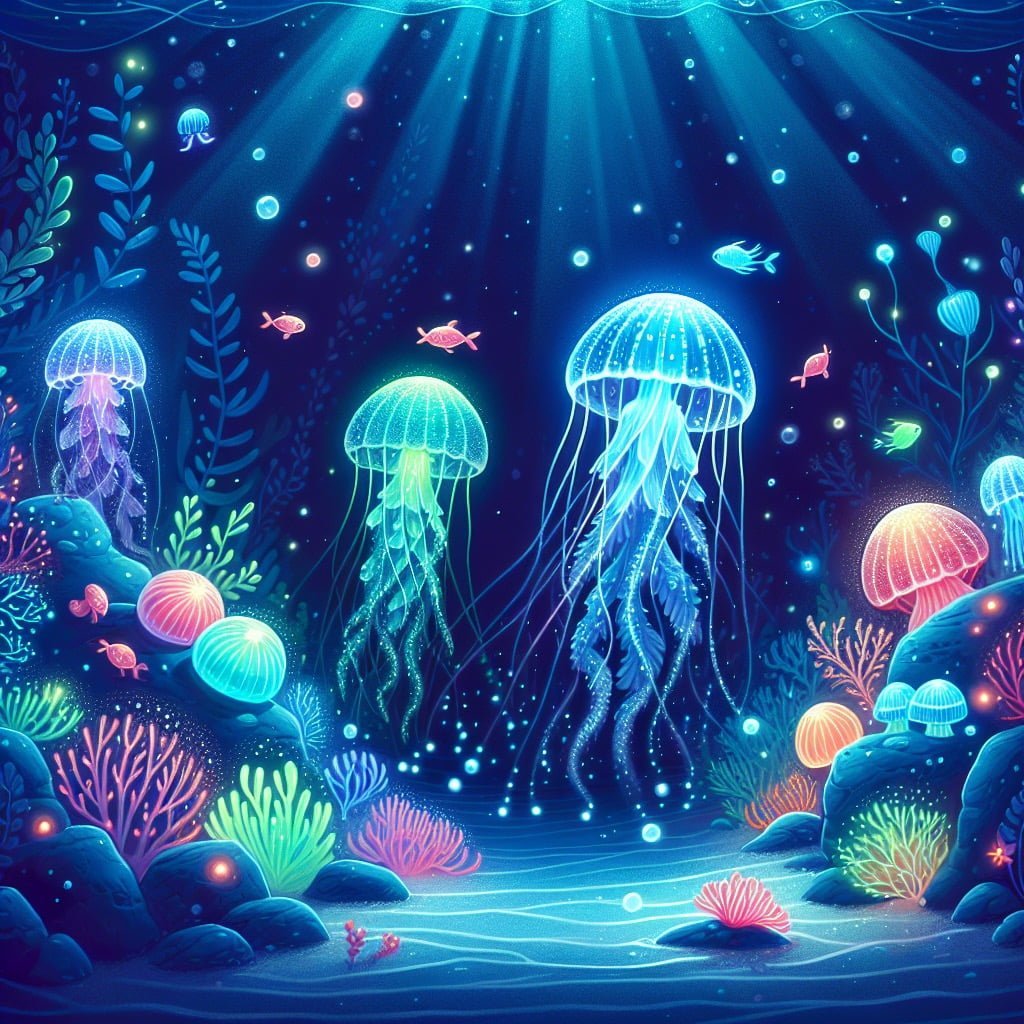
For younger kids: Some jellyfish can light up the water with their special glow!
For older kids: Bioluminescent jellyfish produce light through a chemical reaction in their bodies, creating a mesmerizing glow that helps them attract prey or defend against predators.
Detailed explanation:Jellyfish Facts For Kids
One fascinating fact about jellyfish that captivates the imagination of both children and adults alike is that some species of jellyfish actually glow in the dark. This phenomenon, known as bioluminescence, occurs when the jellyfish produce light through a chemical reaction within their bodies.
The ability of jellyfish to glow in the dark serves different purposes depending on the species. Some jellyfish use bioluminescence as a form of defense, emitting bursts of light to startle or confuse predators. This bright display can disorient predators and make it easier for the jellyfish to escape. Other species of bioluminescent jellyfish use their glowing ability to attract prey. By emitting a soft, enticing light, these jellyfish lure smaller organisms towards them, making hunting more efficient.
One well-known example of a bioluminescent jellyfish is the crystal jelly (Aequorea victoria). Found in the waters of the Pacific Northwest, the crystal jelly emits a greenish-blue glow that illuminates its translucent body. The bioluminescent protein responsible for this glow, known as Green Fluorescent Protein (GFP), has even been used in scientific research as a marker for gene expression.
Overall, the ability of some jellyfish to glow in the dark is a fascinating adaptation that showcases the incredible diversity and ingenuity of these gelatinous creatures. Whether using bioluminescence for defense or hunting, these luminous jellyfish are sure to continue captivating the curiosity of young minds everywhere.
Jellyfish Facts For Kids
6. Jellyfish Can be Found in Both Fresh and Saltwater

For younger kids: Jellyfish can live in oceans, lakes, and rivers all at the same time!
For older kids: While most jellyfish are found in saltwater oceans, some species thrive in freshwater environments like lakes and rivers, adapting to various salinity levels.
Detailed explanation:Jellyfish Facts For Kids: Jellyfish are fascinating creatures that can be found in various marine environments, including both fresh and saltwater.
One of the most interesting aspects of jellyfish biology is their ability to adapt to different salinity levels. While many species of jellyfish are commonly associated with saltwater oceans, there are also species that thrive in freshwater lakes and rivers. This adaptability is due to the unique structure of jellyfish cells, which allow them to regulate their internal salt concentration in response to external environmental conditions.
In saltwater environments, jellyfish are able to maintain their internal salt levels by actively expelling excess salt ions through specialized cells in their body. On the other hand, in freshwater environments where the external salt concentration is lower, jellyfish are able to absorb salt ions from the water to maintain the necessary balance within their cells.
This ability to survive in both fresh and saltwater environments makes jellyfish incredibly versatile creatures. It also means that they can be found in a wide range of habitats around the world, from tropical oceans to freshwater lakes and even estuaries where both fresh and saltwater mix.
Overall, the fact that jellyfish can be found in both fresh and saltwater environments highlights their remarkable adaptability and evolutionary success. By being able to thrive in diverse habitats, jellyfish play an important role in marine ecosystems and are a key species to study for scientists interested in understanding the complexities of marine biology.
Jellyfish Facts For Kids
7. Jellyfish Come in a Variety of Sizes

For younger kids: Some jellyfish are as small as a button, while others are as big as a pizza!
For older kids: Jellyfish size ranges from tiny and nearly transparent species measuring a few millimeters to giant jellyfish like the Lion’s Mane Jellyfish that can have a diameter exceeding 6 feet.
Detailed explanation:Jellyfish Facts For Kids are truly fascinating, especially when considering the wide range of sizes these intriguing creatures come in. From the tiny Irukandji jellyfish, which can be as small as a marble, to the massive Lion’s Mane jellyfish, whose tentacles can stretch up to 120 feet in length, jellyfish exhibit an incredible diversity in size.
One of the most interesting things about jellyfish size is how it can vary not only between different species, but also within the same species. For example, the moon jellyfish can range from as small as a few inches to as large as a few feet in diameter. This flexibility in size allows jellyfish to adapt to different environments and food sources, making them successful predators in a variety of ocean habitats.
The size of a jellyfish is often determined by factors such as availability of food, water temperature, and genetic predisposition. Larger jellyfish tend to thrive in colder waters where food sources are more abundant, while smaller jellyfish can be found in warmer, nutrient-poor environments. Additionally, some species of jellyfish are known to undergo changes in size throughout their lifecycle, with polyps and ephyrae developing into larger medusae over time.
Overall, the diversity of sizes among jellyfish is a testament to their adaptability and resilience as a species. By being able to thrive in a range of sizes, jellyfish have secured their place as one of the most fascinating and enigmatic creatures in the ocean. Learning about Jellyfish Facts For Kids can help inspire a sense of wonder and appreciation for these unique animals.
Jellyfish Facts For Kids
8. Jellyfish Are Mostly Made of Water
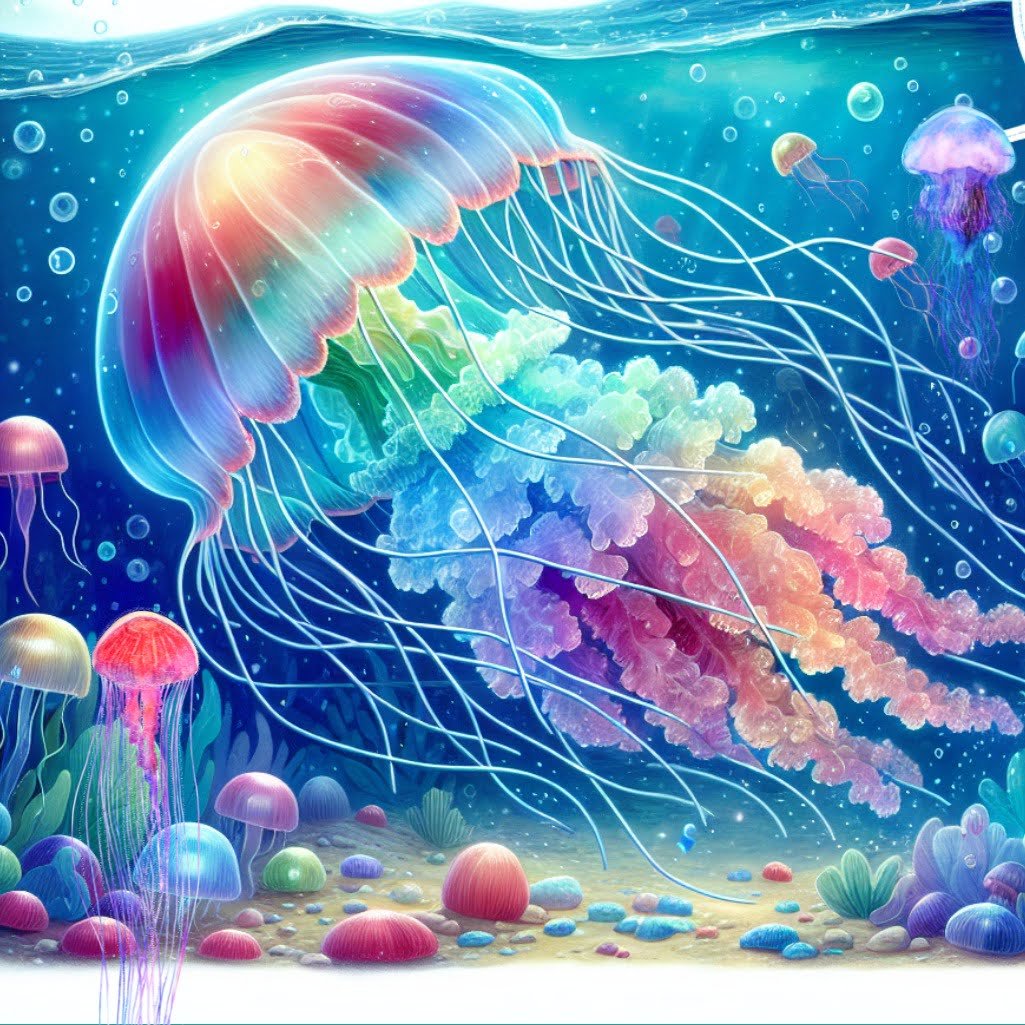
For younger kids: Jellyfish are like watery balloons floating in the ocean!
For older kids: Jellyfish are composed of over 95% water, which gives them their unique gelatinous appearance and allows them to move effortlessly through the water.
Detailed explanation:Jellyfish Facts For Kids: Jellyfish are fascinating creatures that inhabit oceans around the world. One of the most interesting facts about jellyfish is that they are mostly made of water. In fact, jellyfish are made up of about 95% water, which is why they are able to float effortlessly in the ocean.
The jellyfish’s body is gelatinous and transparent, allowing light to pass through easily. This unique composition gives jellyfish their characteristic appearance and allows them to pulse and move gracefully through the water. Their bodies are also incredibly delicate, which is why they are often referred to as “gelatinous zooplankton.”
The high water content in jellyfish is crucial for their survival. It helps them to regulate their buoyancy, allowing them to stay afloat without expending much energy. This is important for jellyfish, as they spend most of their time drifting in the water, using their tentacles to capture prey.
Additionally, the water in a jellyfish’s body acts as a protective cushion, helping to protect its delicate tissues from damage. Without this water-filled cushion, jellyfish would be much more vulnerable to injury from predators or environmental factors.
Overall, the fact that jellyfish are mostly made of water is a key aspect of their biology and adaptation to their ocean environment. Next time you see a jellyfish floating gracefully in the sea, remember that its body is largely composed of water, allowing it to move and survive in its watery world.
Jellyfish Facts For Kids
9. Some Jellyfish Are Immortal

For younger kids: There are jellyfish that can live forever – they’re like superheroes!
For older kids: The Turritopsis dohrnii jellyfish has the ability to revert its cells to a younger state, essentially restarting its life cycle and making it theoretically immortal.
Detailed explanation:Jellyfish Facts For Kids: Scientists have discovered that some species of jellyfish have the remarkable ability to potentially live forever, making them essentially immortal. This phenomenon is known as “biological immortality,” and it is exhibited by jellyfish such as the Turritopsis dohrnii, also known as the “immortal jellyfish.”
The key to the eternal life of these jellyfish lies in their remarkable ability to transform back into their juvenile polyp state after reaching maturity. When faced with unfavorable conditions such as starvation, injury, or disease, the adult jellyfish can revert back to its polyp stage through a process called transdifferentiation. During this process, the jellyfish’s cells undergo a transformation, allowing them to essentially start their life cycle over again.
This incredible ability to reverse aging and rejuvenate themselves sets these jellyfish apart from other creatures in the animal kingdom. While they are not truly immortal in the sense that they can live forever without any risk of death, their unique biological traits allow them to potentially live indefinitely under the right conditions.
Studying immortal jellyfish can provide valuable insights into aging and regenerative processes in other organisms, including humans. By understanding how these jellyfish are able to defy the limitations of time and aging, scientists may be able to unlock the secrets of longevity and ultimately improve human health and longevity.
In conclusion, the fact that some jellyfish are immortal serves as a fascinating example of the incredible diversity and adaptability of life forms on our planet. Jellyfish Facts For Kids, such as the immortal jellyfish, can inspire wonder and curiosity about the natural world and the endless possibilities of biological science.
Jellyfish Facts For Kids
10. Jellyfish Have Harpoon-Like Stingers
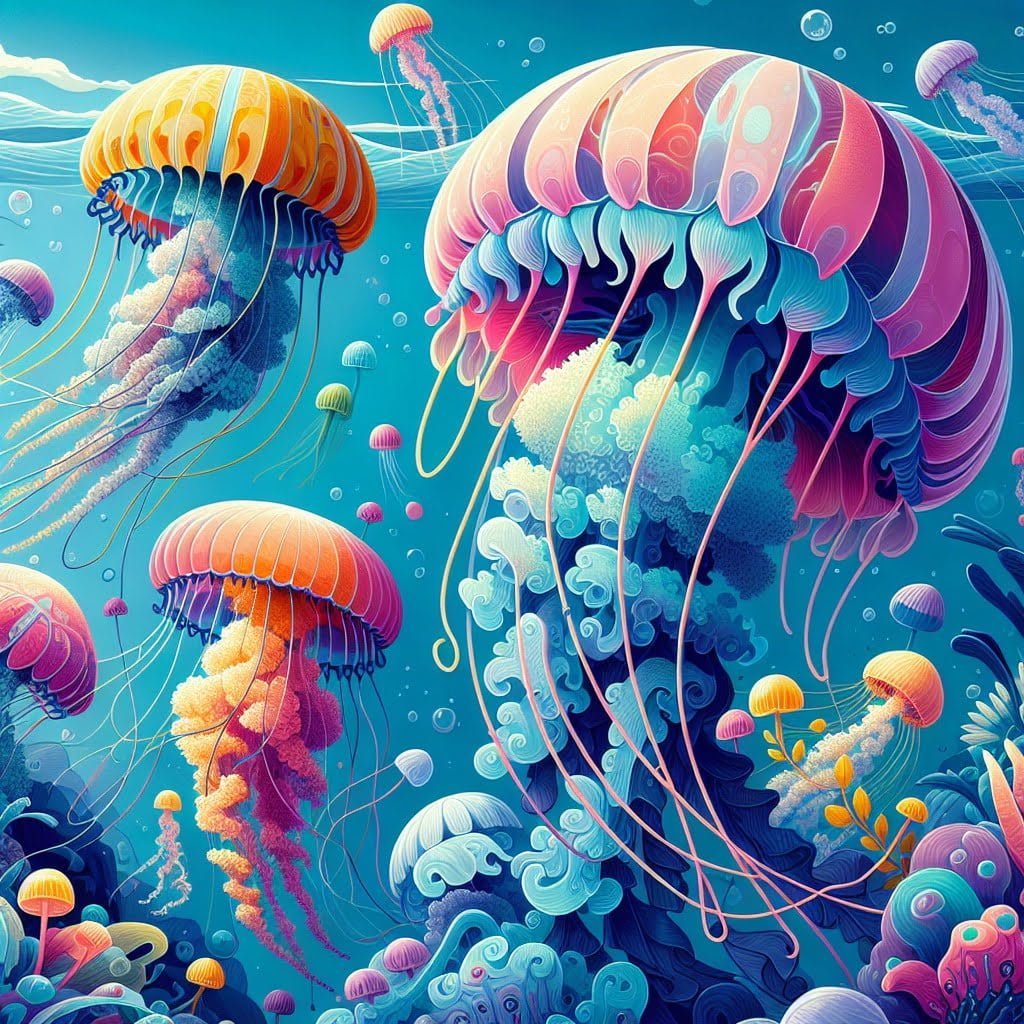
For younger kids: Jellyfish use tiny harpoons to protect themselves and catch food!
For older kids: Jellyfish tentacles are armed with thousands of microscopic stinging cells called nematocysts that shoot out harpoon-like structures to deliver venom and capture prey.
Detailed explanation:Jellyfish are fascinating creatures that inhabit the world’s oceans and seas. One of the most intriguing aspects of jellyfish is their unique method of defense – their harpoon-like stingers. These stingers, also known as nematocysts, are specialized cells located on the tentacles of jellyfish.
When a jellyfish comes into contact with a potential threat or prey, the nematocysts are triggered to release tiny darts that contain venom. These darts shoot out at high speeds and can penetrate the skin of the jellyfish’s target. Once the venom enters the victim’s body, it can cause pain, paralysis, or even death, depending on the species of jellyfish.
The harpoon-like stingers of jellyfish are a highly effective defense mechanism that allows them to capture prey and deter predators. For kids learning about jellyfish, understanding how these stingers work can be both educational and awe-inspiring. It’s important for children to know that while jellyfish may seem delicate and harmless, they are equipped with powerful weapons for survival in their marine environments.
In conclusion, the fact that jellyfish have harpoon-like stingers is a key aspect of their biology that sets them apart from other sea creatures. These unique adaptations help jellyfish thrive in their ocean habitats, showcasing the incredible diversity and complexity of marine life. Learning about jellyfish facts for kids can inspire a sense of wonder and respect for the natural world.
Did you know?
Did you know that some jellyfish species are able to change colors as a way to camouflage themselves from predators?
Summary of Jellyfish Facts For Kids
Jellyfish, those mysterious and fascinating creatures of the ocean, hold a plethora of surprising facts that are sure to captivate curious young minds. From the revelation that jellyfish have no brains but possess a rudimentary nervous system to the jaw-dropping revelation that some species can clone themselves, these gelatinous animals are full of wonder and intrigue. Not only do they come in a variety of sizes, from tiny transparent species to giant behemoths, but they also have a unique composition that is mostly water. Additionally, some jellyfish are even immortal, able to restart their life cycle and potentially live forever. With fun facts about their bioluminescence, distribution in both fresh and saltwater, and their harpoon-like stingers, learning about jellyfish is a thrilling adventure for kids of all ages. Dive into the world of jellyfish and uncover the magic and mystery that surrounds these extraordinary creatures!
Sources and additional information for Jellyfish Facts For Kids
WikipediaBritannicaSan Diego Zoo KidsThe Smithsonian InstitutionDK Find Out!Australian MuseumWorld Wildlife FundThe Nature ConservancyAnimal PlanetMonterey Bay AquariumPBS NatureSmithsonian’s National Zoo & Conservation Biology InstituteWorld Wildlife FundAnimal Diversity Web (University of Michigan)IUCN Red List of Threatened SpeciesThe Cornell Lab of Ornithology – All About BirdsNational Audubon SocietyEncyclopedia of LifeSeaWorld Parks & EntertainmentAustralian Museum – AnimalsEncyclopedia of Life


